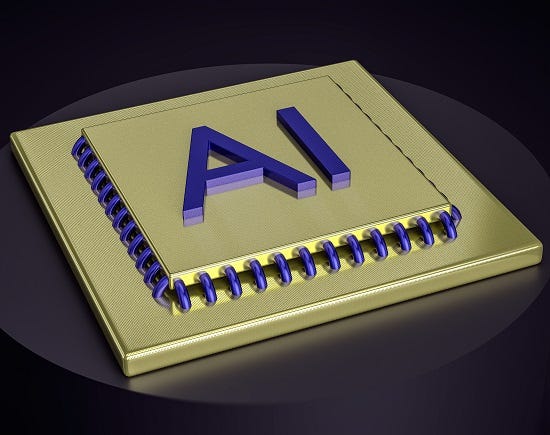Nvidia’s Soaring Revenue Projection Based on Expansion of AI
Nvidia’s projections a marker event in the growth of AI; many chipmakers follow soaring expectations; Nvidia relies on Taiwan to supply its chips
By John P. Desmond, Editor, AI in Business

Increased demand for processors that power AI applications were at the heart of the revenue projections made by Nvidia on May 25 that sent the company’s stock soaring.
“The numbers soared past even Wall Street's most bullish projections,” stated the author of an account in The Motley Fool. “Perhaps the biggest boost to the stock price this morning came from Nvidia's blockbuster forecast. For the fiscal second quarter, management is calling for revenue of $11 billion, which would represent year-over-year growth of 33 percent and Nvidia's best quarter ever,” stated the author, Danny Vena.
One has to wonder if ChatGPT and other LLMs are driving this soaring demand for AI applications.
Other AI chipmakers also saw their stock prices soar after Nvidia’s announcement. “It looks like the new gold rush is upon us, and Nvidia is selling all the picks and shovels,” stated analyst Christopher Rolland of the Susquehanna Financial Group, who saw a point where “generative AI and accelerated computing inflect.”
The account from Bloomberg via yahoo!Finance added that chipmaker Advanced Micro Devices Inc’s stock jumped 11 percent, while suppliers from Taiwan Semiconductor Manufacturing Co. to Advantest Corp. also climbed. Along with memory chipmaker SK Hynix Inc. and Europe’s ASML Holding NV, ASM International NV, BE Semiconductor Industries NV, VAT Group AG and Soitec, they collectively added $215 billion of value, stated the account authors.
CEO Huang Sees “An iPhone Moment”
Nvidia CEO Jensen Huang in an account in The Wall Street Journal compared the developments to “the iPhone moment,” when the shift towards smartphones about 16 years ago came together. Big data center operators are retooling to update their computing infrastructure to position to exploit AI.
“A trillion dollars of installed global data center infrastructure will transition from general purpose to accelerated computing as companies race to apply generative AI into every product, service and business process,” Huang stated.
For its chip supply. Nvidia farms out production to contract chipmakers, including Taiwan Semiconductor Manufacturing Co. (TSMC), which makes virtually all the world’s most advanced AI chips, including the Nvidia GPUs and AI chips from Google, AMD, Amazon, Microsoft, Cerebras, SambaNova Untether and other competitors, according to a recent account in Forbes.
“Modern artificial intelligence simply would not be possible without these highly specialized chips,” stated Rob Toews, venture capitalist with Radical Ventures, author of the account. “None of the breathtaking advances in AI software currently taking the world by storm would be possible without this hardware,” he stated.
TSMC, Primary Source of AI Chips, at Center of Geopolitics
TSMC’s chip fabrication plants, called “fabs,” are located about 110 miles from mainland China. Tensions are escalating between Taiwan and China, which sees the island as its own. An open conflict would pose a challenge to TSMC’s ability to supply AI chips. “One underappreciated consequence is that it would paralyze the global AI ecosystem,” Toews stated. “Put simply, the entire field of artificial intelligence faces an astonishingly precarious single point of failure in Taiwan.”
TSMC has forged what it calls a Grand Alliance that brings together customers, partners in electronic design automation, software development and equipment and materials suppliers who work at a high level of collaboration. This ecosystem is needed to help justify the billions of dollars of investment that advanced chip making requires.
Morris Chang, TSMC’s founder, former CEO and current Chairman, has stated, “TSMC knows it is important to use everyone’s innovation—ours, the equipment makers, our customers, the IP providers. That’s the power of the Grand Alliance. The combined R&D spending of TSMC and its ten biggest customers exceeds that of Samsung and Intel combined.”
The US is making moves to increase the country’s capacity to make advanced chips, including by putting pressure on TSMC to commit to investing $40 billion to build two state-of-the-art fab plants in Arizona. The first is expected to begin production next year, and will be outfitted to produce the technology within Nvidia’s most advanced H100 chip. The second Arizona lab, scheduled to come online in 2026, is being designed to produce the next-generation chip.
Even so, these US plants are projected to supply about five percent of TSMC’s total output, according to the Forbes account. The most advanced chip R&D efforts and teams are expected to remain in Taiwan.
“Artificial intelligence plays a central role in the drama—as a source of leverage, a weapon, and a potential casualty of this great power struggle,” Toews stated, noting that no one knows how it will play out.
Scientists Working on Alternative AI Chip Designs
Alternative AI chip models are being pursued by many. And the use of AI to assist in AI chip design, is a no-brainer; it’s happening now; the question might be how best to apply AI to chip design?.
“AI is such an important technology because it’s involved in most parts of the cycle, including the design and manufacturing process,” stated Heather Gore, senior product manager for the MATLAB platform from MathWorks, in a recent account in IEEE Spectrum. “We think of AI oftentimes as a predictive tool, or as a robot doing something, but a lot of times you get a lot of insight from the data through AI.”
For example, chip designers use many physics-based models in an intensive process. A reduced-order model, less computationally expensive and extensive, can be done at a lower cost. “You could create a surrogate model, so to speak, of that physics-based model, use the data, and then do your parameter sweeps, your optimizations, your Monte Carlo simulations using the surrogate model,” Gore stated. “That takes a lot less time computationally … we’re seeing that benefit in many ways, including the efficiency and economy that are the results of iterating quickly on the experiments and the simulations that will really help in the design.”
Read the source articles and information in The Motley Fool, yahoo!Finance, The Wall Street Journal, Forbes and IEEE Spectrum.
(Write to the editor here; tell him what you would like to read about in AI in Business.)





